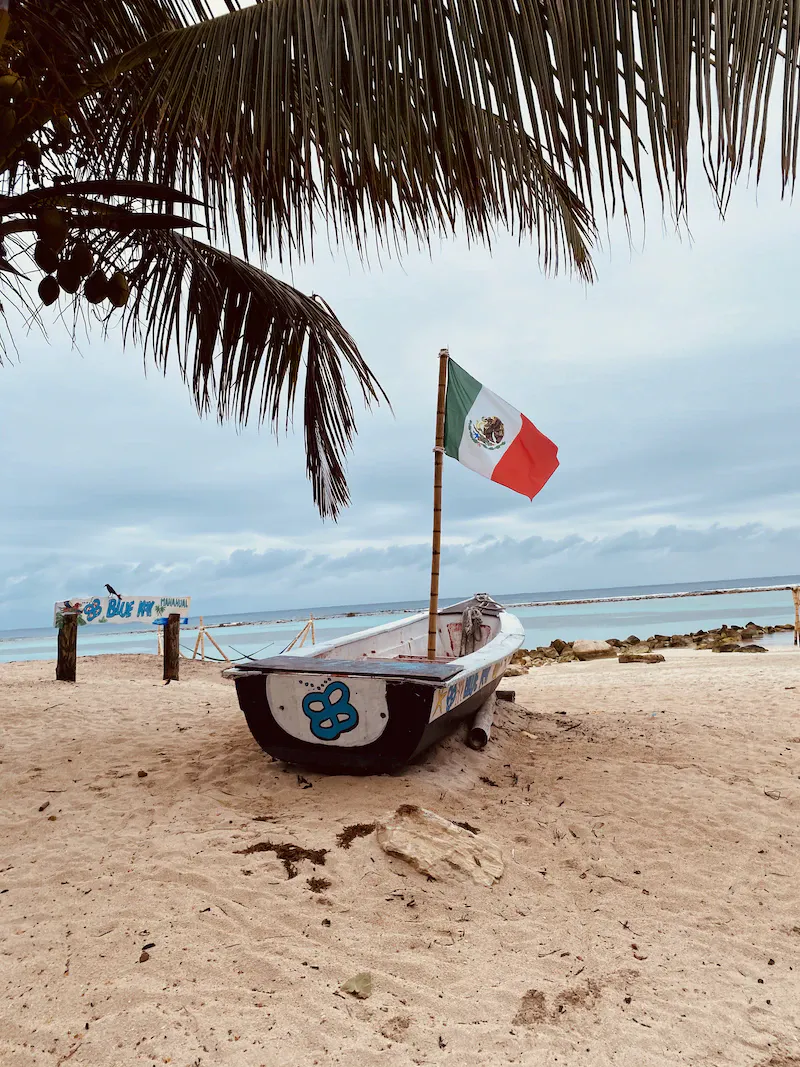The Game: A Look into the Subtle Tactics and Heartbreaking Realities of Human Trafficking

The subtle and dangerous recruitment tactics used by traffickers
Human trafficking is a global issue that affects millions of people, especially women and children. It is a form of modern-day slavery that involves the exploitation of vulnerable individuals for forced labor, sexual exploitation, or other types of exploitation. Traffickers use various tactics to lure and control their victims, and many of these tactics are subtle and dangerous. In this blog post, we will discuss the subtle and dangerous recruitment tactics used by traffickers, the importance of healthy relationships and meaningful connections, and the impact of social media on the recruitment of trafficking victims.
The subtle and dangerous recruitment tactics used by traffickers
Traffickers are skilled at identifying and exploiting vulnerabilities in their victims. They know how to spot individuals who are desperate for love, attention, or money, and they use these needs to manipulate their victims. One of the most dangerous tactics used by traffickers is grooming, which involves building a relationship of trust with their victims over time. This can include offering gifts, providing a place to stay, or simply offering a listening ear. Once the victim is emotionally attached, the trafficker can begin to exploit them.
Another tactic used by traffickers is coercion, which involves using threats, intimidation, or violence to control their victims. This can include physical violence, psychological abuse, or threats to harm the victim’s loved ones. By instilling fear in their victims, traffickers can maintain control and prevent them from leaving.
The importance of healthy relationships and meaningful connections
Healthy relationships and meaningful connections can be powerful tools in preventing human trafficking. By providing individuals with a sense of belonging, support, and love, we can reduce their vulnerability to trafficking. This can include building strong family relationships, fostering positive peer connections, and creating safe spaces where individuals can share their experiences and feelings without fear of judgment or exploitation.
In addition, healthy relationships can provide a buffer against the tactics used by traffickers. When individuals have a strong sense of self-worth and confidence, they are less likely to fall prey to the manipulation and coercion of traffickers.
The impact of social media on the recruitment of trafficking victims
Social media has become a powerful tool for traffickers to recruit and exploit their victims. By using social media platforms like Facebook, Instagram, and Snapchat, traffickers can easily connect with vulnerable individuals and build relationships with them. They can use social media to offer false promises of love, attention, and money, and they can use it to control and monitor their victims.
Parents, guardians, and other adults need to be aware of the potential dangers of social media and take steps to protect their children. This can include monitoring their children’s online activities, teaching them about safe online behavior, and encouraging them to report any suspicious activity to a trusted adult.
In conclusion, human trafficking is a complex issue that requires a multifaceted approach to address. By understanding the subtle and dangerous recruitment tactics used by traffickers, promoting healthy relationships and meaningful connections, and being aware of the impact of social media on the recruitment of trafficking victims, we can take steps to prevent trafficking and support survivors. Together, we can make a difference and create a world where all individuals are safe and free from exploitation.
The role of buyers in fueling the demand for trafficking
Human trafficking is a supply and demand industry, with buyers fueling the demand for exploitation. In this blog post, we will discuss the role of buyers in trafficking, the mental bondage of victims, and the need for intervention and support for vulnerable youth.
The role of buyers in fueling the demand for trafficking
Buyers, also known as johns, are individuals who pay for sexual services or forced labor from trafficking victims. They come from all walks of life and all socioeconomic backgrounds, and their entitlement to sex fuels the entire operation. Without buyers, there would be no demand for trafficking, and the industry would cease to exist.
It is important to recognize that buyers are not innocent participants in the trafficking industry. By purchasing the services of trafficking victims, they are perpetuating a cycle of exploitation and abuse. They are contributing to the physical and emotional harm of vulnerable individuals and perpetuating a system of power and control.
The mental bondage of victims and the trauma bond with their trafficker
Victims of trafficking often experience a mental bondage known as a trauma bond. This bond is a strong attachment that forms between the victim and their trafficker as a result of ongoing cycles of abuse, followed by the illusion of love and reward. The victim becomes emotionally dependent on their trafficker and may feel unable to leave.
Trauma bonds can be difficult to break and require significant intervention and support. Victims need to establish new and healthy connections to replace the bond with their trafficker. They need to have access to resources and services that support their physical and emotional well-being and help them rebuild their lives.
The need for intervention and support for vulnerable youth
Prevention and intervention efforts are essential in addressing the issue of trafficking. We need to provide vulnerable youth with the support and resources they need to prevent them from falling prey to traffickers. This includes building healthy relationships and meaningful connections, creating safe spaces where they can share their experiences and feelings, and providing access to resources and services that support their well-being.
It is also important to provide comprehensive education and training to youth, parents, educators, and community members about the dangers of trafficking and how to recognize and report suspicious activity. By working together, we can create a community that is informed, vigilant, and committed to preventing trafficking and supporting survivors.
In conclusion, trafficking is a complex issue that requires a comprehensive approach to address. By recognizing the role of buyers in fueling the demand for trafficking, understanding the mental bondage of victims and the trauma bond with their trafficker, and supporting vulnerable youth through prevention and intervention efforts, we can take steps to end trafficking and create a world where all individuals are safe and free from exploitation.
The prevalence of trafficking in high schools and middle schools
Human trafficking is a global issue that affects millions of people worldwide. Contrary to popular belief, trafficking doesn’t always involve being kidnapped or taken overseas. Traffickers use subtle recruitment tactics to prey on vulnerable individuals, including children in our own communities. In this blog post, we will discuss the prevalence of trafficking in high schools and middle schools, the simple steps individuals can take to combat trafficking, and the heartbreaking story of Shay and her experience in the game.
The prevalence of trafficking in high schools and middle schools
Trafficking is a hidden crime, and it can be challenging to determine the exact number of individuals affected. However, studies show that trafficking is prevalent in high schools and middle schools across the country. According to a study conducted by Shared Hope International, 40% of buyers of children are adults in positions of authority and trust, including police officers, firefighters, and teachers. Traffickers often recruit children through social media, and many victims go home to their families each night, making it difficult to recognize that they are being trafficked.
The simple steps individuals can take to combat trafficking
There are simple steps individuals can take to combat trafficking and support survivors. Firstly, put away your phones and spend time building healthy relationships and meaningful connections. By investing in the future generation, we can model what healthy relationships look like, good and bad. We can also ask open-ended questions and provide a safe space for youth to share their experiences and feelings.
Parents should be vigilant in monitoring their children’s online activity and not worry about invading their privacy. Traffickers often hide in privacy, and children may not recognize that they are being exploited. Community members should also receive comprehensive education and training about trafficking and how to recognize and report suspicious activity.
The heartbreaking story of Shay and her experience in the game
Shay’s story is a heartbreaking example of how subtle the recruitment of our youth takes place. Shay was recruited at 16 years old by an older girl she met on social media. The girl seemed to have everything together, and Shay felt like she had finally found a place where she belonged. After weeks of talking, the girl invited Shay to a party, where she was told that she had to make money to stay. Shay was handed a condom and dropped off at her first date’s house. Before she knew it, five men had bought her that first night. Shay was trapped in the game for seven years, experiencing ongoing cycles of abuse, followed by the illusion of love and reward.
Shay’s story is a powerful reminder of the importance of intervening and supporting vulnerable youth. Shay’s trauma bond with her trafficker was strong, and she needed new and healthy connections to take its place. Shay is now 21 years old and a survivor, but we must continue to do better than the traffickers and invest in the future generation to prevent others from falling prey to the game.
In conclusion, trafficking is a global issue that affects individuals of all ages, including children in our own communities. By recognizing the prevalence of trafficking in high schools and middle schools, taking simple steps to combat trafficking, and supporting survivors like Shay, we can create a world where all individuals are safe and free from exploitation.
The importance of asking open-ended questions and listening to youth
Human trafficking is a complex issue that affects millions of people worldwide. Traffickers use subtle tactics to prey on vulnerable individuals, including children. In this blog post, we will discuss the importance of asking open-ended questions and listening to youth, the role of adults in positions of authority in perpetuating trafficking, and the power of individuals to make a difference and fight against trafficking.
The importance of asking open-ended questions and listening to youth
Traffickers often prey on vulnerable youth by filling a need or weakness, such as the need for love, protection, or money. To prevent youth from falling prey to these tactics, it’s crucial to ask open-ended questions and listen to their responses. By doing so, we can help youth identify and express their needs in a healthy and safe way.
When adults ask open-ended questions, they create a safe space for youth to share their experiences and feelings. This approach builds trust and allows adults to identify and address potential issues before they escalate. Adults should also take the time to listen to youth and acknowledge their experiences without judgment.
The role of adults in positions of authority in perpetuating trafficking
Adults in positions of authority, including police officers, firefighters, and teachers, play a critical role in identifying and preventing trafficking. However, studies show that 40% of buyers of children are adults in positions of authority and trust. This statistic is alarming and highlights the need for comprehensive education and training about trafficking for all adults.
Adults in positions of authority should be vigilant in monitoring their behavior and setting boundaries to prevent any inappropriate behavior. They should also report any suspicious activity and support victims of trafficking by offering them resources and assistance.
The power of individuals to make a difference and fight against trafficking
Fighting against trafficking is a collective effort that requires individuals to take action in their communities. By being aware of the signs of trafficking and reporting suspicious activity, individuals can make a difference in preventing trafficking.
Individuals can also support organizations that provide resources and assistance to victims of trafficking. Volunteering, donating, and spreading awareness can help these organizations continue their vital work.
In conclusion, asking open-ended questions and listening to youth is crucial in preventing trafficking. Adults in positions of authority have a responsibility to prevent trafficking and support victims, and individuals can make a difference by being aware, reporting suspicious activity, and supporting organizations. By working together, we can create a world where all individuals are safe and free from exploitation.
Conclusion
Human trafficking is a complex issue that affects millions of people worldwide. It preys on the most vulnerable members of our society, including children and teenagers, and is fueled by the demand for sex and labor. In this blog post, we have discussed the subtle and dangerous recruitment tactics used by traffickers, the role of buyers in fueling the demand for trafficking, the prevalence of trafficking in high schools and middle schools, the importance of asking open-ended questions and listening to youth, and the power of individuals to make a difference and fight against trafficking.
It is crucial to understand that trafficking is not just an issue that happens overseas or in other communities. It can happen anywhere, including in our own neighborhoods and schools. The stories of victims like Shay highlight the heartbreaking reality of trafficking and the urgent need to address this issue.
Preventing trafficking requires a collective effort from individuals, organizations, and governments. We must educate ourselves about the signs of trafficking, support organizations that provide resources and assistance to victims, and hold those who perpetrate trafficking accountable.
Above all, we must prioritize the safety and well-being of vulnerable individuals, particularly children and teenagers. By taking proactive steps to prevent trafficking and support victims, we can create a world where everyone is safe and free from exploitation.

